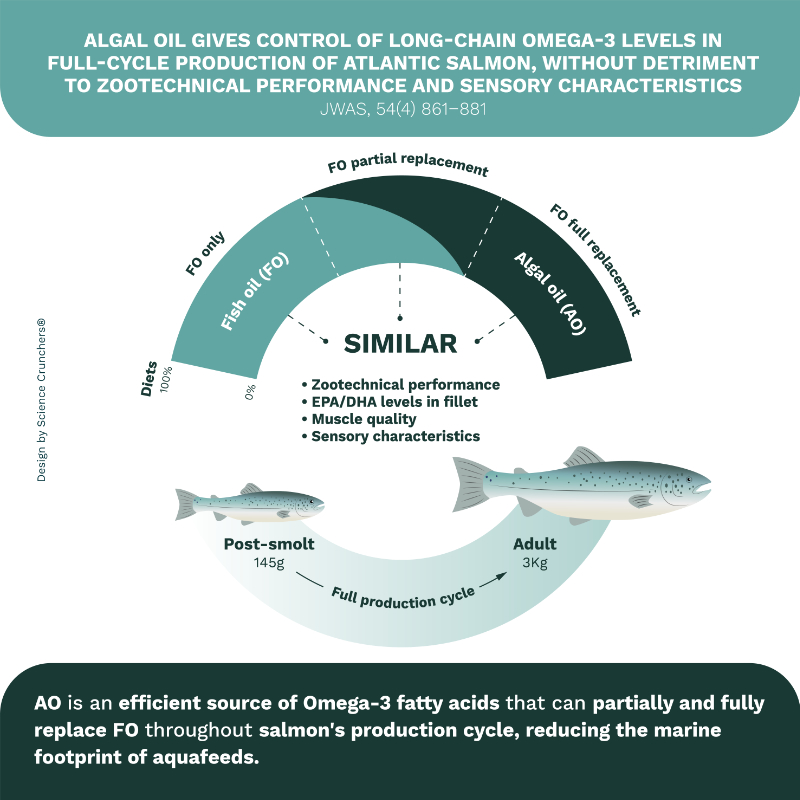JWAS Editor's Choice Awards 55(1)
The American bullfrog (Lithobates catesbeianus) has a high market value for human consumption and th...

This study assessed the suitability of partial or full (100%) replacement of fish oil (FO) with microalgal oil (AO) in Atlantic salmon diets. This represents a novel approach as it is one of the first studies to follow fish through the entire production cycle from post-smolt (145 g) to a 3 kg harvest size. Three experimental trials were conducted consecutively and fish were fed a control diet containing FO as the main source of omega-3 LC-PUFA, with test diets containing graded levels of AO and other plant oils (rapeseed and soybean). No differences in zootechnical performance were found and results showed that AO replacement did not negatively affect growth, muscle quality, or EPA/DHA levels in fish fillets. A variety of sensory characteristics were also compared and raw salmon muscle from fish fed AO diets had favourable odor, taste, texture, appearance, or color. This study clearly demonstrated the suitability of AO as an effective alternative ingredient in salmon feeds and fully supports the idea that AO is a suitable FO replacement for salmon feeds and greater use of AO would reduce the marine footprint associated with aquafeeds.
This interesting study looks at how residents of coastal areas in western and northeastern US states view seafood farming and provides suggestions on how messaging on the benefits of aquaculture can be adjusted to influence public opinion. The economic importance of aquaculture is often emphasized as a benefit but in general, the US public is not well informed and unaware of other potential benefits of seafood farming. This study took a unique message-testing approach to survey 1) how opinions about seafood farming vary in relation to geography, prior familiarity with aquaculture, and sociodemographic attitudes; 2) how malleable opinions on aquaculture are; and 3) what benefits of marine aquaculture (especially seaweed farming) are viewed as reasons to support expansion of the industry. It was found that attitudes and opinions of marine seafood farming are highly linked to prior familiarity with aquaculture, but that this is highly malleable. The researchers suggest that primary messaging should emphasize sustainability and environmental benefits and not economic or social benefits. Focusing more on this message for coastal residents may be important and represent a better tool for gaining public support for the expansion of seafood farming in the US.
Bivalve production is expanding globally and mussel farming plays an important role in such expansion. This study looks at ways to improve hatchery spat production for the European mussel, Mytilus galloprovincialis. The basis of spat production relies on having reliable diets that can be applied in a cost-effective manner. The authors conducted feeding trials that tested a variety of diets to determine if there were differences in growth and survival. What they found was that microencapsulated feeds produced by using a mixture of micro and macroalgae provided 100% substitution in the diet of M. galloprovincialis spat. Growth and survival were similar in comparison to a commercial diet control and other treatments. They suggest that using microencapsulated feeds for spat production can replace commercial microalgal diets and significantly reduce feed costs.